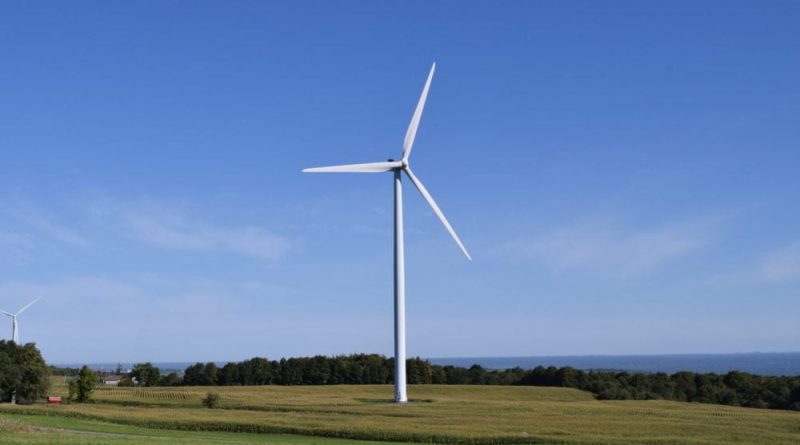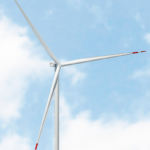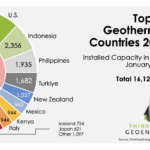Top six wind trends of 2020 (so far)
Energy Disrupter

This has been a year like no other, complete with a tremendous amount of uncertainty for our country and the entire world. Despite the many challenges, the wind industry continued to provide reliable, clean, and affordable energy for the American people. And there’s no sign that it will be slowing down any time soon. Here is a look at 2020’s top industry trends (at least through November).
Despite Setbacks, Wind Still Growing at Record Rate
The coronavirus pandemic had a significant impact on wind project development, causing major delays in the manufacturing, transportation, and installation of projects already under construction. In spite of this, the wind industry is posting one its best years on record. The first quarter saw an increase of new wind installations 117 percent over Q1 in 2019, installing 1,821 megawatts (MW) of new wind projects. The second and third quarters each set records for installed capacity as well. Year-to-date, the country has added 6,309 MW of new wind power, the most ever in the first nine months of a year and a jump of 72 period over the same period in 2019.
Additionally, all signs point to a strong 2021. The wind project pipeline has stayed steady at near-record highs, with 43,575 MW of new wind projects either under construction or in advanced development. Offshore projects represent the largest share of that pipeline at 21 percent. There were also 2,859 MW of new PPAs signed in the first quarter of 2020, the highest volume record for a single quarter, signaling the continued rise of corporate and utility interest in wind. The wind industry set a construction record in 2020 as well with 25,318 MW being built at the end of June. Wind continues to be the top source of renewable energy production in the U.S. and accounts for a little over 7 percent of total electricity produced. There’s now enough installed wind in the U.S. to power over 32 million homes.
Wind Will Power the Nation’s COVID-19 Recovery
The wind industry directly employs 120,000 Americans, with 26,000 of those jobs at more than 530 American factories building wind turbine components. Wind jobs are expected to continue to grow throughout the coming decade and will help power the nation’s post-pandemic economic recovery. The Bureau of Labor Statistics ranks wind technician as the nation’s fastest growing job. But these jobs are not just limited to onshore opportunities. AWEA’s U.S. Offshore Wind Power Economic Impact Assessment finds the offshore wind sector has the potential to attract $57 billion in investments to the U.S. economy and deliver up to 83,000 well-paying U.S. jobs by 2030.
Wind has also been providing immediate economic relief for communities throughout the pandemic, bringing in new tax revenue that can be used to invest in local services. Jeff Bryan, Superintendent of Tri Point School District in Livingston County, IL, noted that wind farms allowed them to provide more resources during the pandemic. “With those funds, we have our own, local stream of funding allowing us to confidently make long-term investments in our district. To date, we have hired teachers, improved our buildings, and upgraded our technology.”
Corporate Customers Continue Signing up Wind Power
For a rising number of businesses across the country, purchasing wind power is the new normal. As companies look to meet sustainability targets and improve bottom lines, renewable energy is an easy way to meet both goals. AWEA’s Wind Powers American Business report found corporations purchased nearly 17,000 MW of wind energy by the end of 2019 and 10 percent of operating U.S. wind capacity is generating electricity for corporate customers. In an age where consumers are looking to support businesses that share their values, purchasing wind power can give corporations an industry edge as well.
Renewables Are More Affordable Than Ever
Wind and solar have been cost competitive with existing power sources for some time and costs continued to fall in 2020, making wind power more affordable than ever. The latest Lazard levelized cost of energy (LCOE) report, which compares the cost of different power generation technologies, found that wind and solar were the clear low-cost power generation options throughout the country. Depending on location, wind farms range in price from $26/MWh to $54/MWh (unsubsidized), making it the lowest-cost source of electricity in many parts of the U.S. Since 2009, land-based wind power costs have declined 70 percent and have recently fallen at a rate of 5 percent per year. The report also found that the cost of building a new wind or solar plant is often more economically viable than continuing to buy power from existing plants powered by fossil fuels.
Offshore Wind Holds Huge Growth Potential
AWEA’s U.S. Offshore Wind Power Economic Impact Assessment found that offshore wind has the potential to deliver up to 83,000 well-paying U.S. jobs by 2030. The report also notes that the areas off our coasts have more than 2,000 GW of offshore wind potential, which is nearly double the nation’s current electricity use. It’s not a surprise that offshore wind has the potential to be a job creation engine, as 74 different occupations are needed to build and operate offshore wind projects, according to the Workforce Development Institute.
The Bureau of Ocean Management (BOEM) has issued 15 active commercial leases to date for the development of offshore wind projects. These lease areas can support over 26 gigawatts (GW) of offshore wind. Several East Coast states are driving demand for offshore wind by establishing targets to procure a total of 25,400 MW of offshore wind by at least 2035. As of February 2020, they have selected over 6,000 MW of projects to help meet these goals. Procurement policies help ensure investment in the industry which will lead to the creation of an American supply chain and job creation.
Wind is Bipartisan
With both a pandemic and an election, 2020 was a year of uncertainty and change. The good news is that data shows with absolute certainty that support for wind energy is bipartisan. According to a Pew Research Poll almost 80 percent of Americans say that the U.S. should focus its energy supply on developing renewables like wind and solar. Another July 2020 survey in the U.S. by The Harris Poll found 86 percent of Americans think the U.S. should emphasize using clean, renewable wind energy more.
Though much has changed this year, the U.S. wind industry and renewable energy still hold significant opportunity for economic growth while providing clean, low-cost energy. By continuing to invest in grid transmission and smart energy policies, we can ensure wind and other renewables can meet their potential to launch the clean energy future.
Original Source: https://www.aweablog.org/top-six-wind-trends-of-2020-so-far/
















